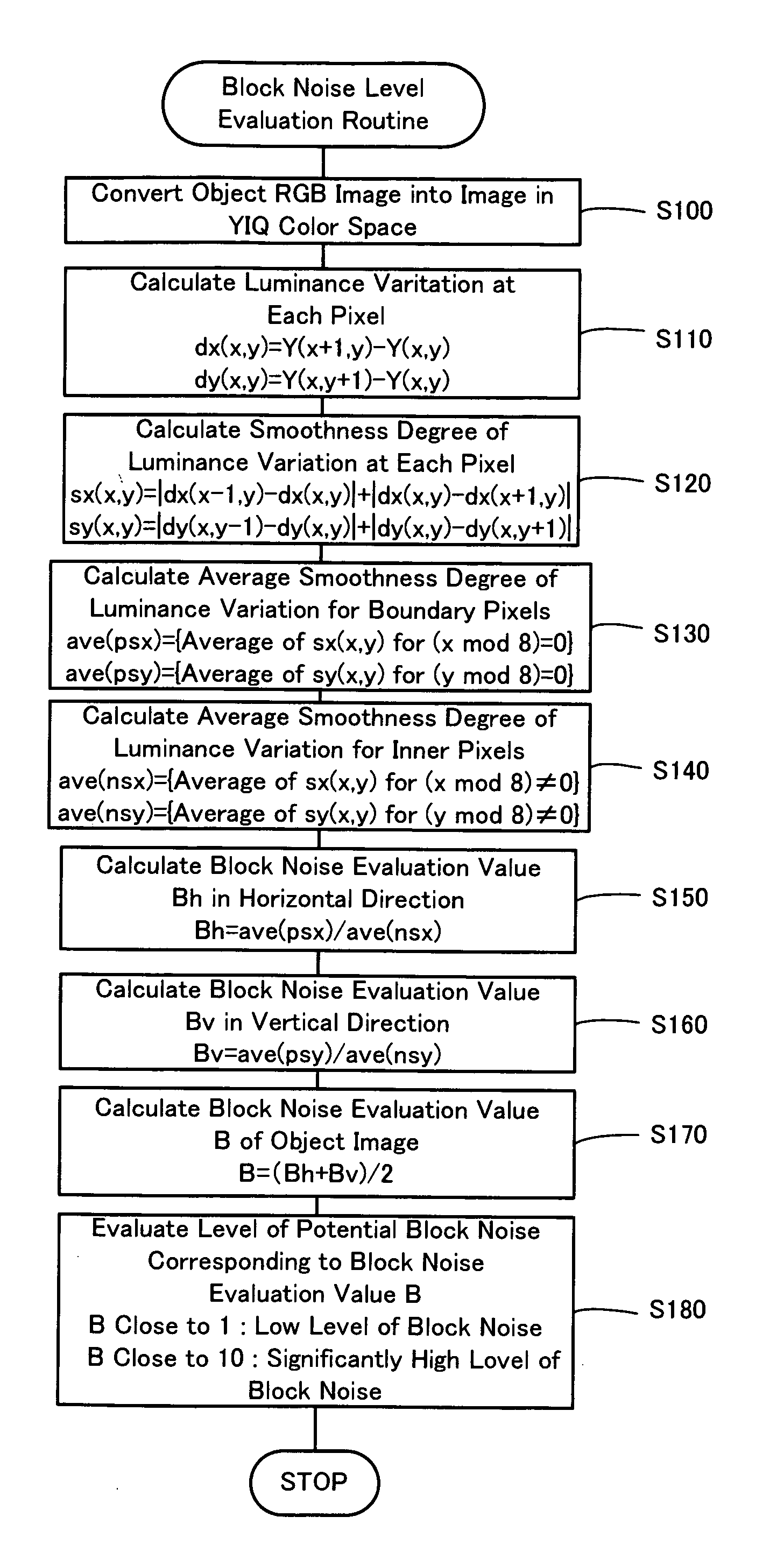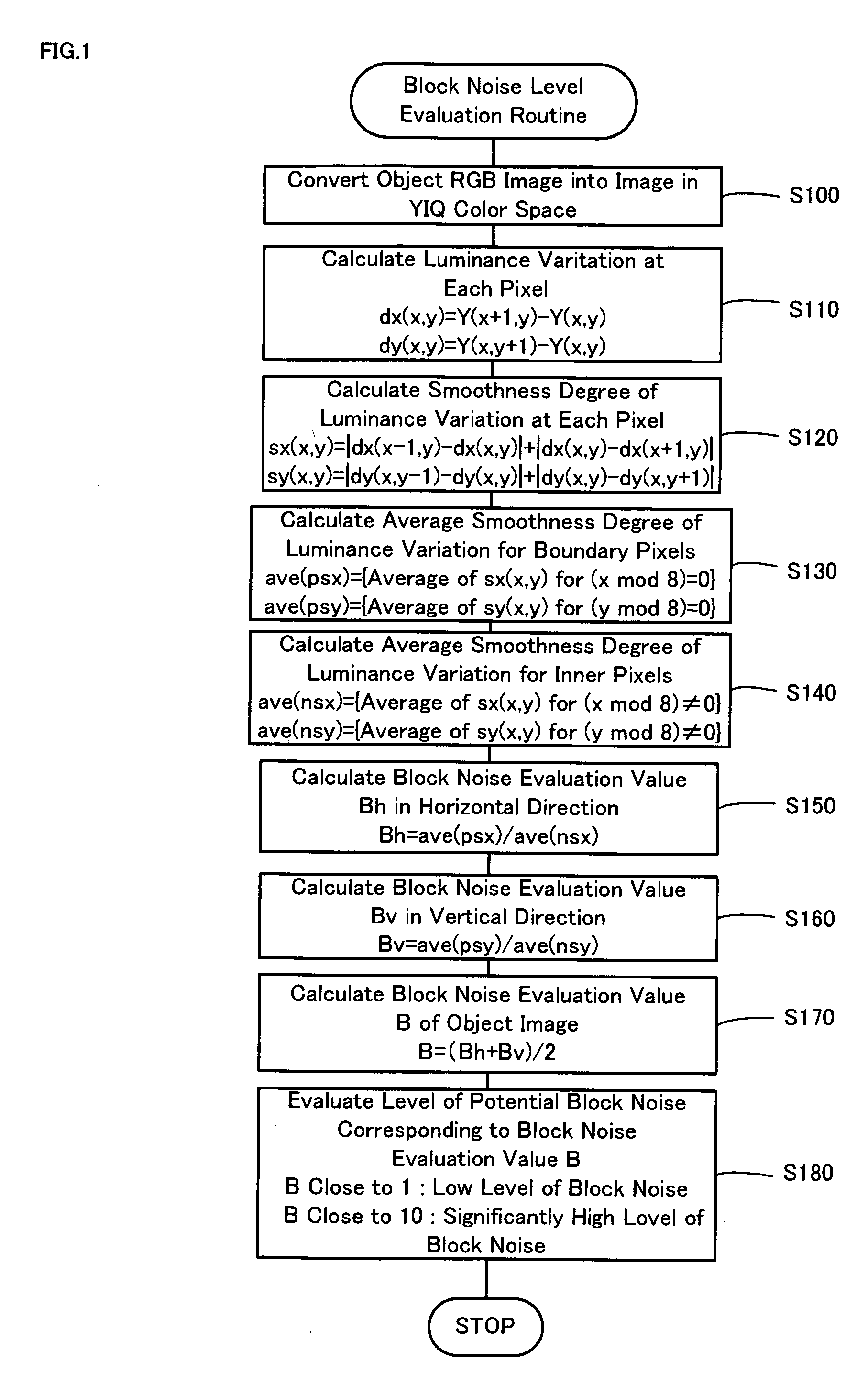Block noise level evaluation method for compressed images and control method of imaging device utilizing the evaluation method
a technology of noise level evaluation and compressed images, which is applied in the field of block noise level evaluation of compressed images and control methods of imaging devices utilizing the evaluation method, can solve the problems of reducing the compression rate of compressed images, allowing the user to check the potential noise, and affecting the noise of compressed images even with a relatively low compression rate, so as to reduce the compression rate
- Summary
- Abstract
- Description
- Claims
- Application Information
AI Technical Summary
Benefits of technology
Problems solved by technology
Method used
Image
Examples
Embodiment Construction
[0043] Some modes of carrying out the invention are described below as preferred embodiments. The description first regards the block noise level evaluation method of the invention.
[0044] The block noise level evaluation method evaluates the level of potential block noise that may arise on each block boundary in a JPEG (Joint Photographic Experts Group)-compressed image, which is obtained by compression subsequent to division of an original image into multiple blocks of 8 pixels in both horizontal and vertical directions. FIG. 1 is a flowchart showing a processing routine of block noise level evaluation method in one embodiment of the invention. The block noise level evaluation routine first converts an object RGB image, which is expressed in a color system of red (R), green (G), and blue (B) and is JPEG-extended, into a YIQ color space of three primary elements Y (luminance), I (orange-cyan), and Q (green-magenta) according to Equation (1) given below (step S100): (YIQ)=(0.2990.5...
PUM
 Login to View More
Login to View More Abstract
Description
Claims
Application Information
 Login to View More
Login to View More - R&D
- Intellectual Property
- Life Sciences
- Materials
- Tech Scout
- Unparalleled Data Quality
- Higher Quality Content
- 60% Fewer Hallucinations
Browse by: Latest US Patents, China's latest patents, Technical Efficacy Thesaurus, Application Domain, Technology Topic, Popular Technical Reports.
© 2025 PatSnap. All rights reserved.Legal|Privacy policy|Modern Slavery Act Transparency Statement|Sitemap|About US| Contact US: help@patsnap.com



